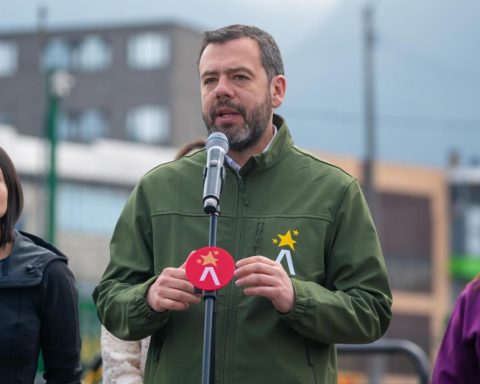Last year, renewable energy sources covered 13% of the country’s electricity demand, which meant a significant increase compared to the 10% obtained in 2020.
The improvement was made possible, to a large extent, by the incorporation of 1,004.57 megawatts (MW) of installed power, with an increase of 24% compared to the previous year, according to data from the Ministry of Energy.
In this regard, the Secretariat specified that of the total installed power incorporated in 2021, 97% corresponded to renewable energy sources, through 26 large-scale projects in 10 provinces.
The figures obtained last year bring Argentina closer to the goal of reaching 20% of electricity supply from renewable sources by 2025, as established by Law 27,191.

In this regard, the Secretary of Energy, Dario Martinez, expressed that “Argentina is in a growth process in which we demand more and more energy and where renewable energies have been fulfilling a fundamental role”.
“Argentina is in a growth process in which we demand more and more energy and where renewable energies have been playing a fundamental role”Darío Martínez, Secretary of Energy
“From the national government we are going to continue working to prioritize its growth and that it also be with national production and industry, generating work and developing our science and technology,” added the official.
Coincidentally, the undersecretary of Electric Power, Frederic Basualdo, explained: “We are taking important measures to boost the growth of the renewable energy sector, supporting projects that show progress, freeing up transport capacity, which is essential to add new projects and investments, and by promoting contracts between private and distributed generation”.
The technology that contributed the most generation in the year was wind power (74%), followed by solar photovoltaic (13%), small hydraulic uses (7%) and bioenergy (6%), according to data from the Administrative Company of the Electricity Wholesale Market Sociedad Anónima (Cammesa).
The technology that contributed the most generation in the year was wind power (74%)
Likewise, of the new projects inaugurated in 2021, 42.3% corresponded to wind technology, 30.8% to bioenergy, 15.4% to photovoltaic solar and 11.5% to small hydroelectric plants (PAH).
Geographically, the 26 projects that allowed the growth of renewables were distributed between Chubut (seven with wind technology); Buenos Aires (three for bioenergy and one for wind technology); Córdoba (two PAHs and one bioenergy); Santa Cruz (three from wind power) and Chaco (two from bioenergy).
Also Salta (two of solar technology); San Juan (two lots); La Pampa (one of bioenergies); Mendoza (one from PAH) and Misiones (one from bioenergy).
Currently, Argentina has 187 renewable energy projects operating, adding more than 5,181.74 MW of power to the national energy matrix.
Good returns also occurred in distributed generation, which showed a growth of 111% in the number of registered User-Generators (UG) and 190% in installed power.
One of the milestones of last year occurred on September 26, when the historical peak of electricity demand coverage through renewable sources was reached, after achieving 28.84% of the national total.
In a statement, the Secretary of Energy maintained that the growth of electricity generation from renewables was underpinned by “a series of public policies that accompanied the large-scale projects that showed progress,” and that “promoted investments by ordering the assignment of office for contracts between private parties”.
In addition, it was highlighted that the policies “allowed the release of transportation capacity compromised by initiatives that presented inconveniences and updated the tax benefits for the installation of distributed generation equipment.”

















